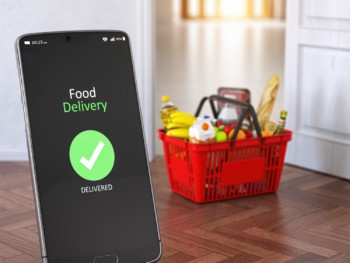Why proving product authenticity from the start of the supply chain is mission critical
A recent on-line survey amongst Supply Chain professionals based in North America, Europe, and the Asia Pacific highlights the number one priority for global supply chains as traceability and provenance (source: 101 Blockchains Consultancy).
As a raft of new technologies emerge to establish provenance and maintain product visibility throughout the supply chain, this article shows that the critical start point for supply chain management is a focus on authenticity.

In short, establishing product authenticity at the source of production, enabled by technology, allows all parties across the value chain to have visibility and a tamperproof record of a “trusted” product.
Once this layer of trust is created, this provides the foundation for driving efficiencies by stripping away expensive compliance regimes and the need for complex on-site inspections, audits, and record reconciliation.
In subsequent papers, we discuss the wider implications of new technology for supply chains but applied to track and trace, the expression “garbage in garbage out” helps to concentrate minds. Simply put, new technology is the enabler of track and trace via its ability to create an immutable product record but unless time and effort is spent up-front on authenticating the product at source, what the supply chain is effectively perpetuating is simply a pale version of the truth.
Unpacking Product Authentication Factors
The process of authentication starts by unpacking the factors, layers and data points that establish each product’s unique identity; a practice we are all familiar with when logging into a website to confirm our own personal identity.

It starts with us providing a user name and password and then dependent on the service being accessed, a process of multi-factor
authentication kicks in which might include a time-based
one-time password or SMS text message with a code.
Work undertaken in the US and UK on Meat Supply Chains by SCCG’s technology partners puts this into further context for the authentication of, for example, beef and beef protein. At a macro level, multiple factors were central to establishing product provenance, namely location, the animal’s DNA, a hoofprint in other words which were layered into individual authentication factors:
- Location: the GPS location of the animal
- Animal: The cattle’s DNA “hoofprint”
- Regulatory data points eg Farm location and ID
Authentication can follow a staged process, that is to say, you start simply with factors within the business today, and then over time look to overlay additional properties that uniquely identify the product and cannot be falsified. For example in the case of beef, facial recognition of cattle and other enhanced profiling techniques as they become available.
Storing and Communicating the “Product Truth”
In our next article, we will explain how Blockchain is becoming the technology of choice for global supply chains to store tamperproof and counterfeit free product information, based on the state-of-the-art encryption techniques that Blockchains deploy.
However, ensuring product authenticity also requires a secure link between the physical product and the data captured digitally. The transformative potential of Blockchain in global supply chain tracking therefore needs to be integrated with other technologies such as Internet-of-Things (IoT) and radio-frequency identification (RFID) and other sensors. Not only do these sensor technologies bring increased product visibility but allow real time tracking of movements throughout the supply chain and environmental conditions such as temperature control.

The Wider Benefits of Authenticity include:
- Reduction in food fraud, counterfeiting and fakery
- Facilitating of product recalls allowing the tracing of product back to the source of production
- Communication of provenance to consumers via QR or NFC codes, coupled with enhanced brand storytelling
- Reduced overhead of audit and compliance/inspection regimes, both governmental and third party supply chain rules
- Leveraging of emerging tech like IOT (internet of things), smart sensors, RFID chips, remote monitoring, audio and video streams
- Creation of web or mobile-based dashboards which allow authorized parties to view activities and products streaming across the chain
- De-risking and lowering of product and commercial business insurance costs
- Provision of a more cost effective platform for banks and other lenders to lend to businesses
Next time: In the second article in our 4-part Blockchain series, we examine the concept of “Creating Digital Assets” (such that each product has both a physical and digital entity) and the benefits for the supply chain.














